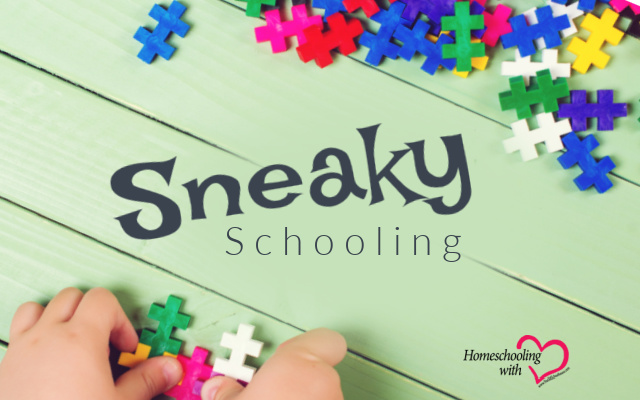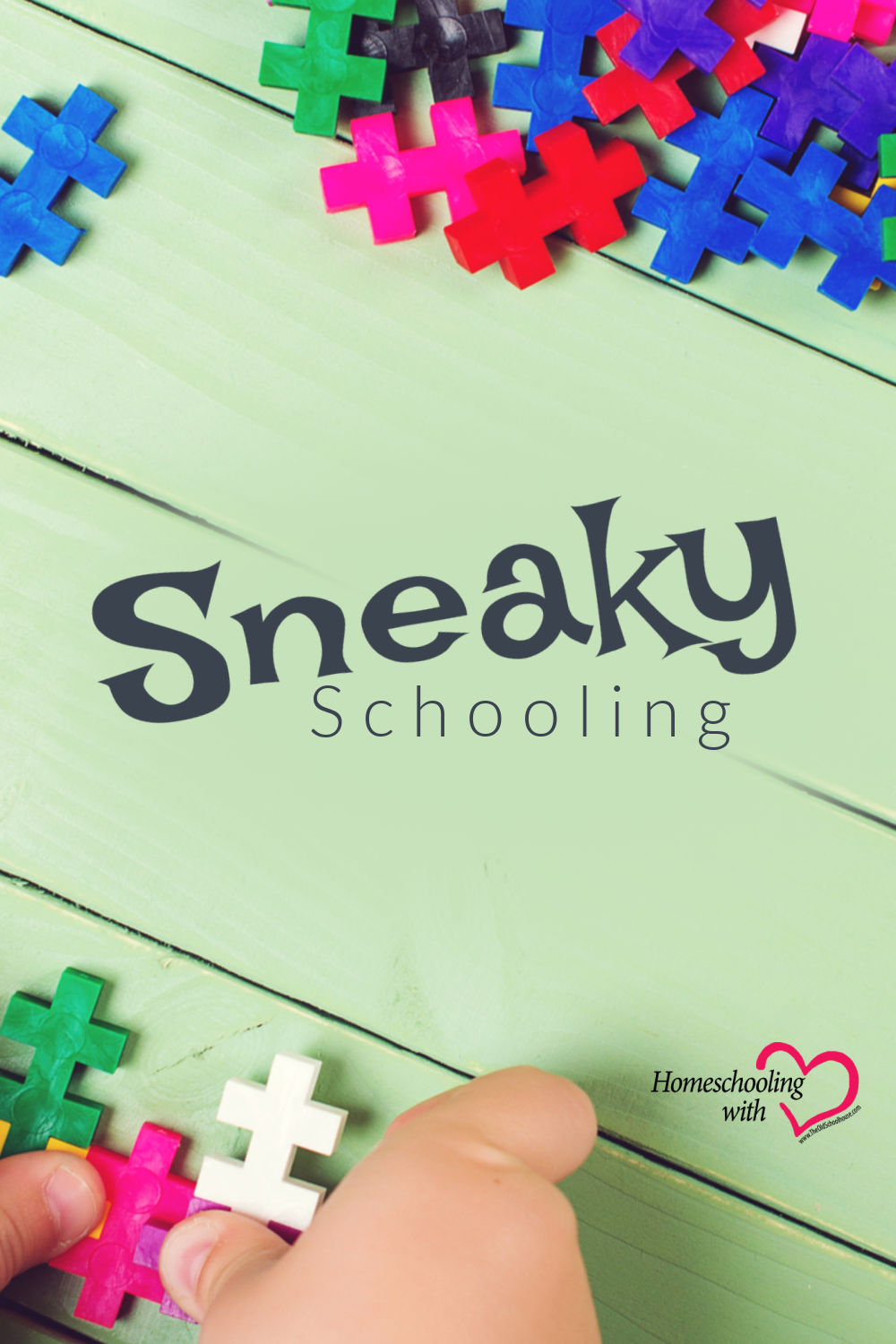Sneaky Schooling


Years ago, I heard about a newly released cookbook. The book focused on methods to sneak fruits and vegetables into recipes. The premise was that if you secretly hid healthy ingredients in recipes, then your family, especially your children, would consume more fruits and vegetables in their diets without even knowing it. The idea intrigued me.
I borrowed the cookbook from my local library and tried some recipes. Some were good, and some were not. Some methods described in the book were labor intensive, and some were easy. Overall, it was an interesting experiment, and I came away with several recipes that I still use today.
Sneaky schooling is like the method of sneaky cooking that I learned in that cookbook. Instead of sneaking vegetables into recipes, you sneak, or facilitate, educational opportunities in common experiences. Just like eating the food with the bonus of hidden fruits and vegetables, your kids also get something extra with sneaky schooling–they learn.
Now, I understand that not everyone approves of the sneaky approach. Some people do not believe that you should hide fruits and vegetables in recipes, and these folks may have the same reservations about sneaky schooling. I am not suggesting dishonesty. If my children asked what ingredients I put into their favorite baked macaroni and cheese, I would tell them about the hidden sweet potato and cauliflower. However, they have never asked. All they care about is that it tastes good.
I do not advertise the healthy ingredients, and you do not have to advertise the sneaky schooling. In fact, I suggest you don’t. The moment your children are told about the hidden benefits, they are more apt to protest. I remember a birthday party at my home when a mom asked me how I colored the frosting on the cake. We had been chatting about healthy ingredients, and I described the various fruits and vegetables I had used to achieve the color. At that moment, her daughter, who had been listening to our conversation while eating her cake nearby, immediately stopped eating and told her mom she was full. She didn’t want to eat frosting made with fruits and vegetables, even if she couldn’t taste them. Had she not overheard our conversation, she likely would have finished her cake.
Sneaky schooling is not about dishonesty. The point of sneaky schooling is to provide engaging learning opportunities for your children that do not feel like traditional school. You do not need to announce that an activity is educational. Just allow your children the freedom to learn. It is this freedom, and the joy that often accompanies it, that can lead to a child becoming a lifelong learner. As a homeschooling mom, that is one of my primary goals. I want my children to want to learn throughout their lives.
So, how do you incorporate sneaky schooling? Here are a few suggestions:
- Games – There are many board games that require the use of strategy or logical thinking. Some games involve math concepts while others require language skills. There are games you can play with cards and games that you play on paper. Physical games can build mental, physical, and team-building skills.
- Puzzles – These can be puzzles that you physically piece together or mental puzzles like crosswords.
- Field Trips – These can be trips to familiar or new places. You can go to a park, museum, or historic site. When you visit, encourage conversations about the location. What do you notice? What is unique? Why would someone want to visit? If it is a familiar location, challenge your children to identify something new.
- Language – Try to incorporate an unfamiliar word into your everyday language regularly. If your children don’t notice the new word, ask them if they know what it means. If they don’t know, tell them or look it up together. You can also ask your children to find unfamiliar words to use in their everyday language.
- Imitation – Let your children witness you learning a new skill. Show your children that learning is part of everyday life. It doesn’t have to be anything difficult, just share your learning experiences with your children. It could be as simple as reading about a new topic and then sharing information with your children.
These are just a few of the countless ways you can be sneaky with your schooling. Learning opportunities are everywhere if you purposefully look for them. Sometimes, you may need to ask lots of questions to stimulate the thinking process or direct a conversation to reach a conclusion. Just be careful not to take out your teacher voice. Sneaky schooling is playful and enjoyable. It is learning without realizing you were being taught. It is fun. The more you do it, the better you’ll get at it. Start with something small and build up from there. Before you know it, you’ll be sneaking in schooling all the time. I wish you many happy, sneaky schooling days ahead.
Heidi Kinney is a freelance writer from Massachusetts. She has been homeschooling her children since 2007. She shares homeschool resources and lessons at SharedLessons.org, and inspiration for runners at WhySheRuns.com.













































